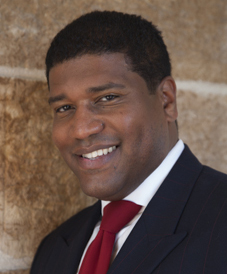The Chief Diversity Officer:
Strategy, Structure, and Change Management
Featuring Dr. Damon A. Williams
2:00 pm - 3:15 pm, EST, Thursday, September 12, 2013
Online Registration is Closed
Members: $49, Non-Members: $79
 This session is designed to assist and inform new chief diversity officers (CDO), emerging diversity leaders, college presidents and other professionals interested in the CDO role to create a high caliber diversity infrastructure at their institutions. This session is designed to assist and inform new chief diversity officers (CDO), emerging diversity leaders, college presidents and other professionals interested in the CDO role to create a high caliber diversity infrastructure at their institutions.
Dr. Damon Williams, co-author of the 2013 book The Chief Diversity Officer: Strategy, Structure, and Change Management (with Dr. Katrina Wade-Golden and foreword by NCAA President Mark Emmert), will be the presenter.
This webinar will focus on the 21st century definition of the CDO role; key CDO leadership competencies; principles of designing a high caliber chief diversity officer capability; building your integrative diversity leadership strategy; and comparing the CDO role across the higher education, non-profit and corporate sectors.
This session will present qualitative, quantitative, and practical experiences drawn from the nation's most seasoned diversity leaders. It will also provide survey data from more than 800 organizations, and "on the ground" leadership of Damon Williams based on his experiences as a diversity officer at three institutions and working with more than 300 organizations around the world.
Damon Williams has also authored Strategic Diversity Leadership: Activating Change and Transformation in Higher Education (foreword by USC and AERA outgoing president Professor William G. Tierney), and The Role of Chief Diversity Officers in Academic Medicine, authored on behalf of the American Association of Medical Colleges (AAMC). Recently, Damon Williams was appointed to a new global leadership role as the Senior Vice President of Programs, Training, and Youth Development for the Boys and Girls Clubs of America, where he will guide the educational and youth development strategy for the BGCA movement in more than 4100 clubs around the world, touching more than 4 Million young people annually.
|